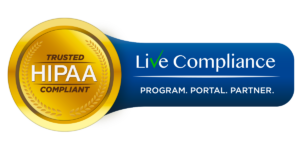Chronic care diseases require quite a different approach to health care compared to other illnesses. Patients with such conditions tend to require care over a longer period and with physician intervention necessary from time to time. The care process can get in the way of the patient’s day-to-day, especially if traditional in-person-based care models are to still be relied upon. However, remote patient monitoring is helping to change the narrative and state of affairs when it comes to chronic care management. It is providing on-time, cost-efficient and robust care that helps not just patients but health care providers as well. Without further ado, here are the important roles RPM is playing in chronic care management.
1. Physicians can pick out the red flags early enough
The earlier a patient’s chronic illness can be detected, then the more effective treatment solutions will be for the patient. Moreover, when chronic illnesses such as Afib and other arrhythmias go undetected, then patients can experience adverse life-threatening events like:
- Stroke
- Fainting
- Heart failure and others
With some arrhythmias, for instance, occurring asymptomatically, it becomes years before the symptoms become visible. By which time, the damage will have already been dealt. However, remote patient monitoring can serve as an early warning detection system.
Patients’ data can be monitored from afar, and when certain thresholds are reached, clinical intervention is triggered by way of smart alerts to indicate that vitals are out of range. This makes it easier for caregivers to pick up deterioration signs early enough before server damage takes root.
2. Customize follow-up reduces clinician burden
While managing chronic illness the burden of follow-up largely rests on the caregiver’s shoulder. The traditional way of operation, i.e. in-person visits and examinations, takes a toll on the workflow. It can stretch human personnel thin when care time must be split between long-term care needs, other patient cases, and administrative tasks.
However, certain remote patient monitoring solutions are revolutionizing how we go about follow-up for chronic diseases. For Instance, Aura Health’s customized health check-up questions. This aids physicians in the follow-up process, which frees up the workflow significantly if you consider how many chronic care patients the clinician has to tend to.
3. RPM improves patient confidence and connectedness
Can chronic illness cause anxiety? Well, yes. Such patients are at greater vulnerability to stress, hopelessness, and anxiety. All these emotional obstacles can impact the efficacy of medication or treatment by disrupting sleep patterns, and ultimately, the strength of one’s immune system.
Living with a chronic disease can be far from easy, to say the least. It can instigate extended periods of uncertainty in a patient’s life, but remote patient monitoring can step in to help. RPM ensures excellent and round-the-clock connectivity between patients and providers. The former can get on-demand clarification should they feel anything is amiss, while it also goes a long way to ease the mind knowing that their vitals are constantly in check. Ultimately, this bodes well as far as improving chronic care health outcomes is concerned.
4. Care coordination efforts improve as well
Managing chronic diseases is usually a team affair that may require the participation of several departments. In the traditional order of doing things, care efforts and coordination were often hampered by disparate legacy systems that created data silos.
Remote patient monitoring through innovative data management solutions such as Aura Health’s UNICA is however flipping this situation on its head. Such technology is improved connectivity in care by:
- Enabling care facilities to build a single source of truth
- Provide always-on patient data access to various members of the care team
- Enhancing communication through video and audio tools
5. RPM improves chronic care management capacity for a facility
Did you know that remote cardiac monitoring can reduce atrial arrhythmia (Afib) admissions or hospitalization by up to 65%? Well, the technology lowers cases of hospitalization and readmission not just for Afib, but a plethora of many other chronic conditions as well.
Remote patient monitoring technology intervenes to nip emergencies in the bud, thus relieving clinical workflows of important work hours. What’s more, vital tracking and other iterative tasks such as patient-specific report generation can be delegated to artificial intelligence or outsourced service personnel. This goes to free up even more time for care facilities to take on more chronic care patients without denting quality.
Get superior RPM to improve chronic care for your facility
Across the US, chronic ailments plague 60% of the adult population, with 40% having at least 2 such conditions. In North America, they are responsible for $3.8 trillion in yearly healthcare expenditures. Remote patient monitoring is key to steadying the rising cases, by enabling care facilities to do much more with way less. If your hospital or clinic is struggling with a short-handed workflow or wants to improve its chronic care process with the power of innovative technology, check out Aura Health today.
